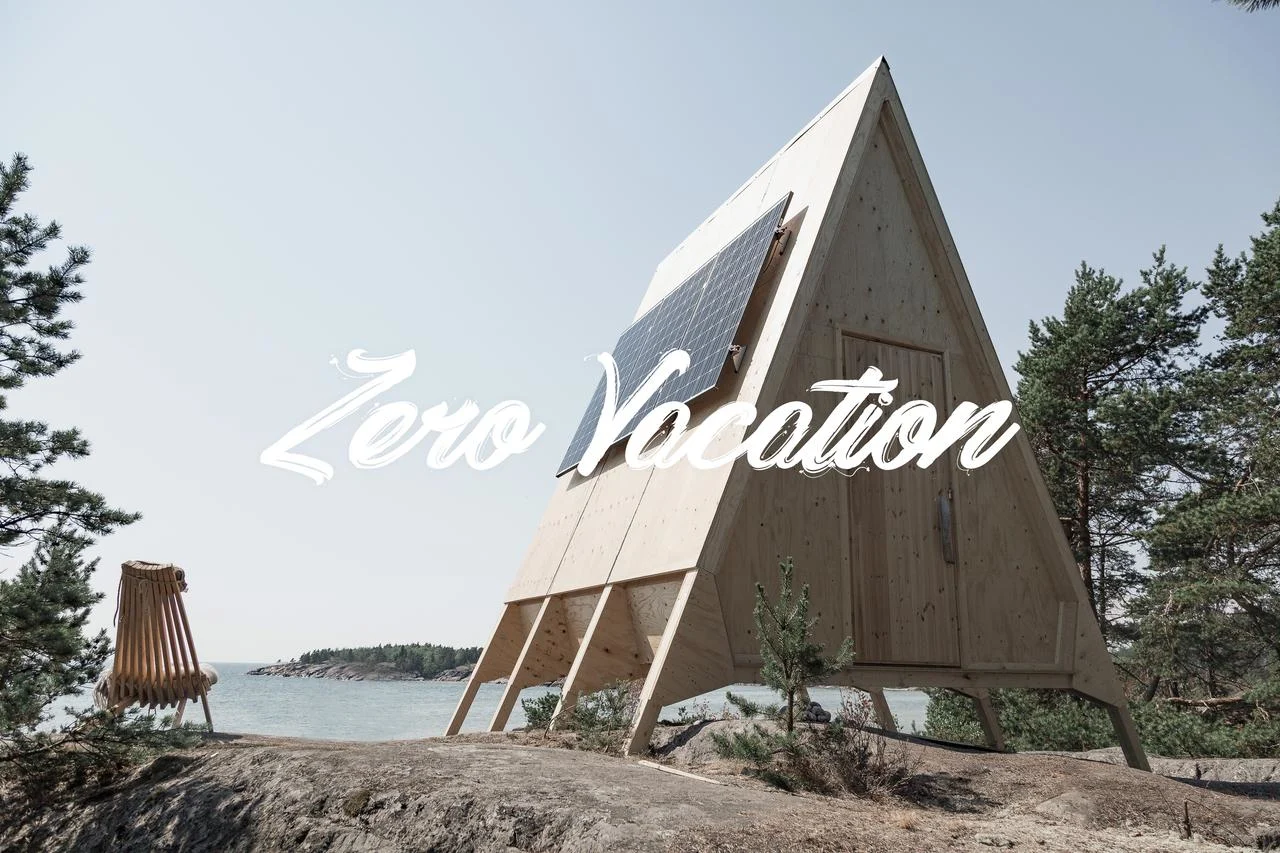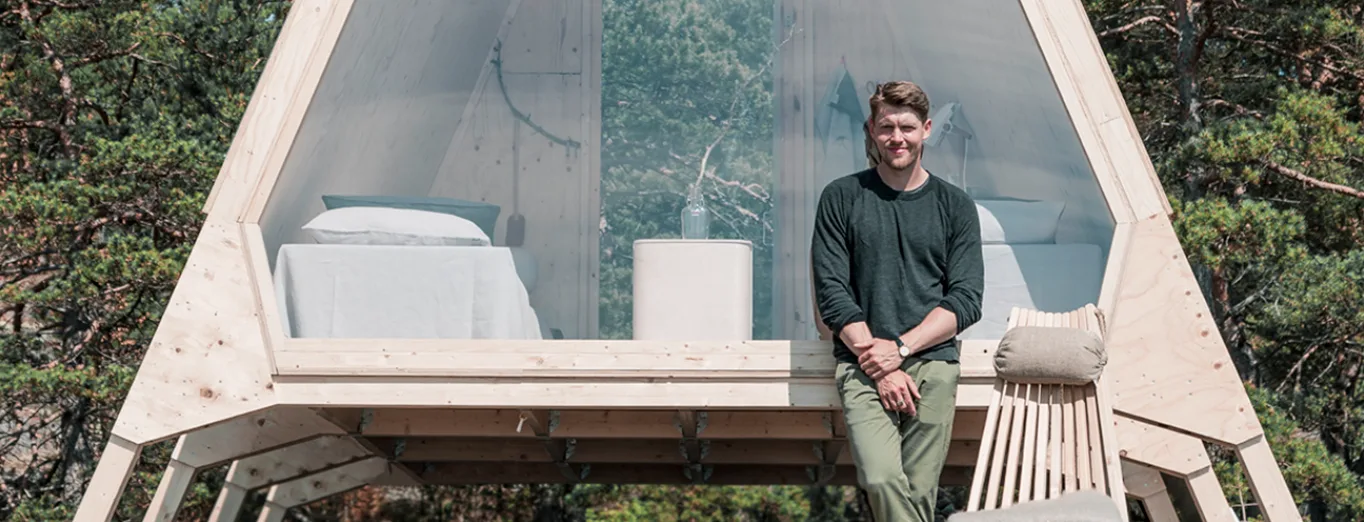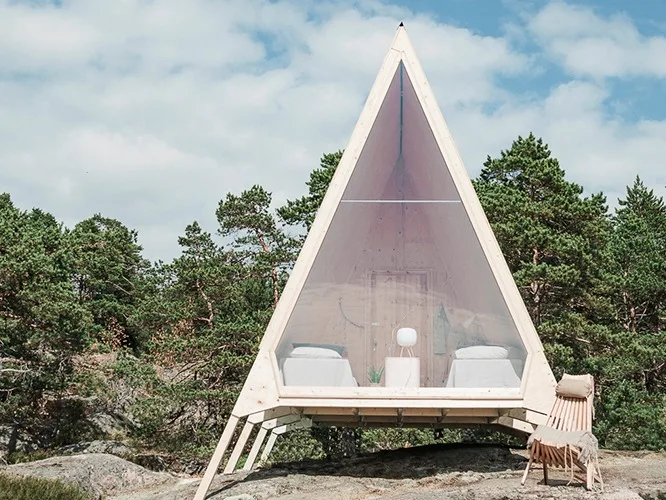
Sustainability
4 minute read
Meet Robin Falck – the designer behind the Nolla cabin
Finnish designer Robin Falck designed the Nolla cabin, but would he live in it? Read on to discover more about the design process and ideology behind creating a lasting, sustainable design that brings its visitors closer to nature.
Helsinki-based designer Robin Falck lives for constantly learning and mastering new skills and making good use of them in his design work. With a passion for items that last, the multi-talented designer tries to make his own designs as timeless and sustainable as possible. For his latest project, the Nolla cabin, Falck found inspiration in the idea of bringing people closer to nature with a minimal environmental impact.
What got you interested in this project?
It was clear from the very beginning that this was a special project. With a client like Neste, I knew right away that it would be possible to find the best solutions for minimizing the cabin’s footprint, without too many compromises.

You designed the Nolla cabin, but would you live in it?
Absolutely. The cabin represents an alternative way of living, without any of the unnecessary commodities we consume these days. It represents an approach to living where the focus is more on what lays on the outside of a dwelling, rather than within.
I hike a lot and spend time in close contact with nature, and I’ve come to realize that a place the size of a tent is all we really need for living. Most importantly, the cabin enables life in the realm of nature, from which I feel people have become alienated.
The first Nolla cabin is ready. Would you change anything?
To answer this question, it would be interesting to experience life at the cabin myself and test all the functions. The elements that go into such a small cabin are easy to keep coherent, but I do admit that controlling ventilation and heating is always a challenge.

As for the materials, recycled building material would be interesting to experiment with. For the time being, however, Kerto LVL was by far the most reliable solution. It is a Finnish timber product and ecological in itself, as wood is basically a carbon sink throughout its life cycle. The material is also both hard and lightweight, which makes the cabin mobile and durable. However, this first version is a prototype, so naturally I will keep developing it and adjusting it to different environments.
What else could the Nolla cabin be used for?
The cabin could be used as an urban lodge for sustainable festival or event accommodation. It could also function as a lodge along trekking routes, where leaving minimal traces in the environment is just as crucial as in Vallisaari.
Nolla is easy to construct, dissemble and transport, because moving and constructing it can be accomplished by a few people, no heavy machinery is needed. The “paws” enable it to be erected in any terrain without permanent groundwork, so it can be used for low-impact living in delicate surroundings, as we have done in Vallisaari.
There are other transportable living options, of course, but I personally prefer wooden structures in comparison to, for example, dwellings built out of shipping containers. Wood is a breathable, natural material that can be modified and easily recycled. There’s something special to living in a wooden house – or indeed, a cabin.
What should be done to a Nolla cabin if it ever reaches the end of its life cycle?
The cabin structures have been fastened together with screws, so it can be taken apart and put back together like a puzzle. The pedestals are adjustable, so that the cabin can adapt to different kinds of terrain. In essence, there are no special parts used in building it – a replica of any part can be made from scratch by anyone, all they need is timber.
The culture of repairing things is disappearing, and we’re quick to buy a replacement rather than fix what we already have – but that’s not a very sustainable way of living. I find modern-day helplessness and the inability to make things with our own hands slightly scary, so I wanted to make the cabin easily repairable and thus give it an infinite number of life cycles.